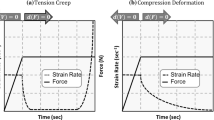Abstract
Impact-initiated energetic materials are a class of energetic materials that are formulated to release energy under highly dynamic loads. Under quasi-static or static loads, however, the materials are intended to be inert and carry a material classification of 4.1 flammable solid. In general, these materials are formed by introducing metal powders into a polymer binder but a number of binderless varieties exist (primarily pressed/sintered intermetallics and thermites). Most of the materials are sufficiently insensitive so as not to produce a self-sustaining reaction; as such, they require the mechanical work of a high-strain-rate plastic deformation process to provide the energy required to drive the reaction. Traditional initiation techniques such as exploding bridge wires or flame initiation are not sufficient to maintain a reaction in this class of materials. This paper presents a brief overview of the energy release characteristics of this class of materials, including a discussion of the material formulations, initiation phenomena, and a discussion of the manner in which the material properties affect the energy release characteristics.
Similar content being viewed by others
References
“Shear-Driven Reactive Material Combustion at High-Speed Impact”, B. Myriski, 2005 Joint Classified Warheads and Ballistics Symposium, 15–18 August, 2005.
“Impact Initiation of Rods of Pressed Polytetrafluoroethylene (PTFE) and Aluminum Powders”, W. Mock, Jr, W. H. Holt, 14th APS Topical Conference on Shock Compression of Condensed Matter, 31 July – 5 August, 2005, Baltimore, MD.
“Reaction Efficiencies for Impact-Initiated Energetic Materials”, R.G. Ames, S.S. Waggener, 32nd International Pyrotechnics Seminar, June 2005, Karlsruhe, Germany.
“Vented Chamber Calorimetry for Impact-Initiated Energetic Materials”, R.G. Ames, AIAA Aerospace Sciences Meeting, January 2005.
“Measurements of Energy Release of Impacting Reactive Spheres”; Waggener S.S.; Warheads and Ballistics Classified Symposium, August 2004.
“Energy Release of Impacting Reactive Spheres”; Waggener, S.S., Naval Surface Warfare Center; Dahlgren Division Technical Report TR-04/9; September, 2004.
“Third Reactive Fragment Target Chamber Test Series”, L. Brown, Applied Research Associates Project Number 4592 and 4593, October 1998.
“Comparison of Reactive Material Formulations, Part One: Results from Testing Activities”, R.G. Ames, E.W. Lacy, Warheads and Ballistics Classified Symposium, August 2004.
“Measurements of the Effects of Target Skin Thickness on the Impact-Initiated Energy Release from PTFE-Al Projectiles”, R.G. Ames, B.P. Brennan, Warheads and Ballistics Classified Symposium, June 2003.
“Measurements of the Effects of Impact-Initiated Energy Release from Moderate-Density Reactive Materials”, R.G. Ames, R.K. Garrett, Warheads and Ballistics Classified Symposium, June 2003.
“Detonation-Like Energy Release from High-Speed Impacts of Polytetrafluoroethylene-Aluminum Projectiles”, R.G. Ames, R.K. Garrett, L. Brown, 5th Joint Classified Bombs/Warheads and Ballistics Symposium, June 2002.
“Fracture Toughness Evaluation of Polytetrafluoroethylene”, Joyce, J.A.; 14th US National Congress on Theoretical and Applied Mechanics, June 23–28, 2002.
Author information
Authors and Affiliations
Rights and permissions
About this article
Cite this article
Ames, R. Energy Release Characteristics of Impact-Initiated Energetic Materials. MRS Online Proceedings Library 896, 308 (2005). https://doi.org/10.1557/PROC-0896-H03-08
Published:
DOI: https://doi.org/10.1557/PROC-0896-H03-08




